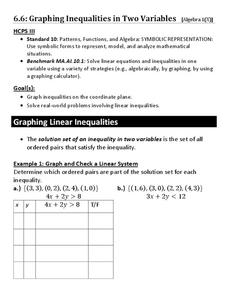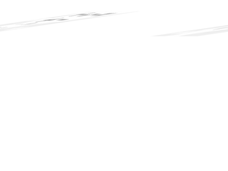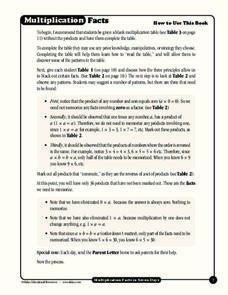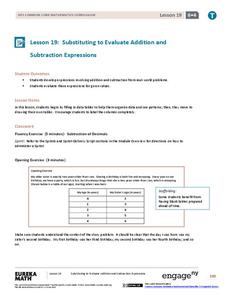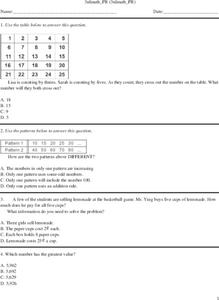Virginia Department of Education
Scientific Notation
Writing a number is all in the notation. The resource introduces the class to scientific notation. Pupils learn the process of taking a very large or small number in standard form and write it in scientific notation. To practice,...
Curated OER
Addition: Number Bonds to 10
You have the answer and a variable, but something is missing! The class fills in the missing addend in 23 practice problems that all add up to 10. This is a great way to build number sense, pattern recognition, and automaticity.
Charleston School District
Pythagorean Theorem and Converse
You've heard that it is true, but can you prove it? Scholars learn the Pythagorean Theorem through proof. After an overview of proofs of the theorem, learners apply it to prove triangles are right and to problem solve. This is the second...
Curated OER
Writing Linear Equations in Different Forms
Can your class write linear equations three different ways? Here is a study guide that includes slope-intercept, standard, and point-slope forms. Learners are given the slope and a point on the line, or two points and are asked to write...
Curated OER
Graphing Inequalities in Two Variables
This study guide is a great resource to help you present the steps to graphing linear inequalities. Show your class two different ways to graph an inequality and work on a real-world example together. The document could also be easily...
Illustrative Mathematics
Making a Ten (Grade 1)
How many ways can first graders make a 10? Using an addition chart, learners color in the 10s on the table. They notice and explain the meaning of the pattern, and how to get to another sum of 10.
Curated OER
Morning Math
Good morning, math scholars! There are 10 warm-ups here to get your class recalling past concepts and staying sharp on newer ones. Skills include writing an even and odd number sequence, subtracting money amounts, dividing shapes in...
Curated OER
Dividing by Negative Powers of Ten (B): Single-Digit Facts
Students are prompted to divide single digit numbers by negative powers of ten in this straightforward worksheet. Prompted to divide ten numbers by 1, .1, .01, .001, and .0001, students can develop a pattern which will ease the...
Curated OER
Number Pattern
In this number sequencing worksheet, students complete a picture by drawing from dot to dot. In this drawing worksheet, students answer one question.
Curated OER
Patterns
In this Algebra I worksheet, 9th graders explore number and geometric patterns and use the Sieve of Eratosthenes to find the prime numbers less than one hundred. The six page worksheet contains eight multipart questions. Answers are...
Curated OER
Learning about Fibonacci
In this learning about Fibonacci worksheet, students read about Leonardo Fibonacci and his contribution to mathematics, then study the pattern of Fibonacci numbers, in math and in nature.
Didax
Multiplication Facts
Learning their multiplication facts is a big step in the education of young mathematicians. Help achieve this goal with the support of this collection of instructional materials.
Illustrative Mathematics
Red and Blue Tiles
Here, second graders are tasked to find the patterns that have an even number of tiles. They are asked to think about why these patterns are even or odd and explain how they know.
Los Angeles County Office of Education
Assessment for the California Mathematics Standards Grade 1
Here is an assessment designed to test mathematicians' knowledge of writing numbers, comparing numbers, skip counting, solving addition and subtraction problems; along with measuring objects, telling time, identifying shapes, reading...
Los Angeles County Office of Education
Assessment for the California Mathematics Standards Grade 3
Assess scholars' knowledge with a 22-page assessment that covers place value, patterns, probability, estimation, measurement, geometric figures; and their ability to add, subtract, multiply and divide proficiently.
EngageNY
Substituting to Evaluate Addition and Subtraction Expressions
Substitute this resource for what you used to use. Learners identify patterns in data tables and write addition and subtraction expressions to represent relationships. Substitution allows them to solve problems in context in the 20th...
CCSS Math Activities
Patchwork
Patch up any misconceptions about writing functions. Scholars undertake a performance task that has them first examine a pattern in patchwork cushions. They represent the patterns in triangular and rectangular blocks using a table and as...
Concord Consortium
Here Comes the Sun
Many phenomena in life are periodic in nature. A task-based lesson asks scholars to explore one of these phenomena. They collect data showing the sunrise time of a specific location over the period of a year. Using the data, they create...
Noyce Foundation
Miles of Tiles
Create number sentences and equations to solve geometric problems. Each activity in the series of five asks young mathematicians to consider different-sized tiles to build structures according to specific criteria. The first activities,...
Curated OER
3rd grade math review
In this math review worksheet, 3rd graders answer multiple choice questions about patterns, addition, least to greatest, and more. Students complete 20 questions.
Curated OER
Missing Pattern Blocks
For this pattern blocks worksheet, students look for missing pattern blocks, record them in a graph, and then put them away. The graph contains a picture of each pattern block.
Curated OER
What's the Pattern?
In this pattern instructional activity, 3rd graders find the missing number to complete each of the six patterns. The missing numbers are provided and students determine which pattern they belong in.
Curated OER
Number Patterns and Sequences: Mental Tests
In this pattern and sequence worksheet, students continue sequences as fast as possible, given the next number in a sequence defined by a pattern, and answer multiple choice questions.
Curated OER
What's Missing? Partner Number Patterns
In this addition worksheet, learners look for missing numbers in addition patterns of 6, 7, and 10. Patterns are set up in addition problem form.






